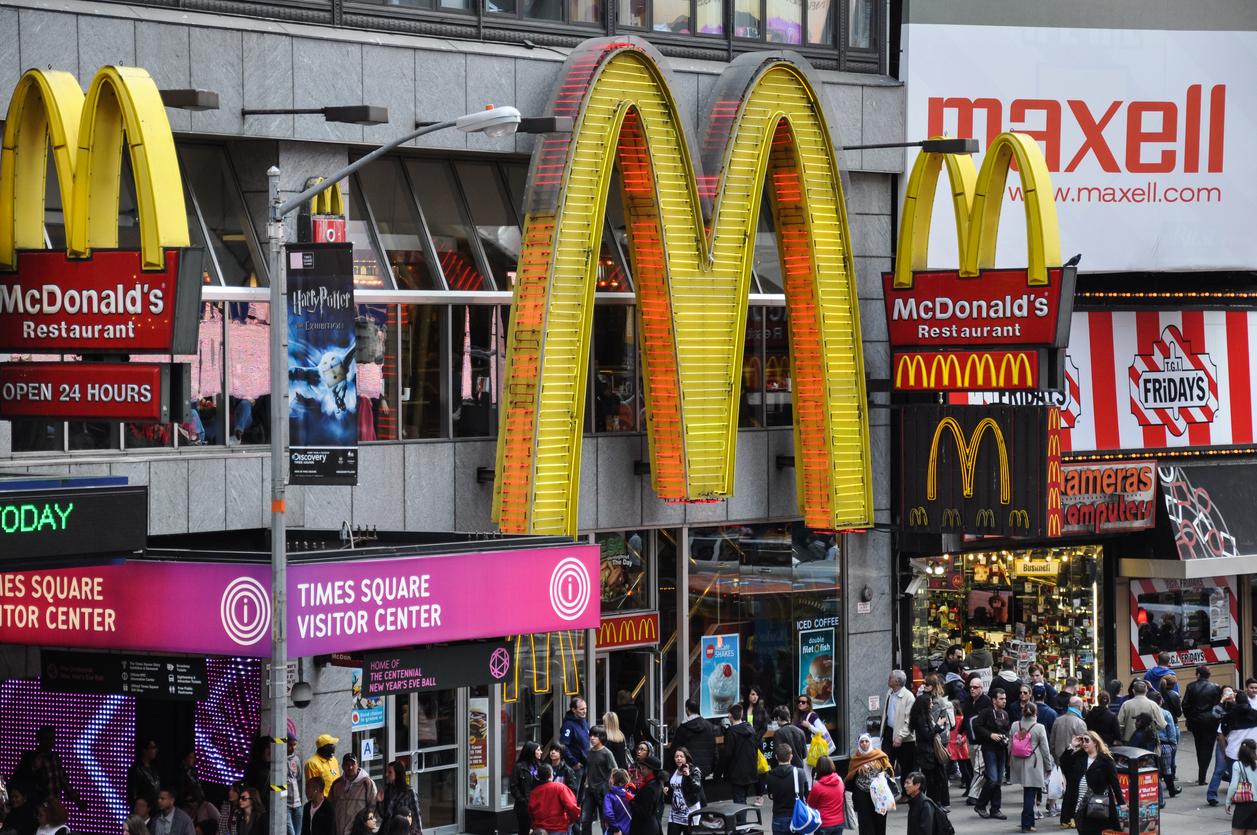Burger King has just launched light fries and McDonald’s diet menus. Laudable efforts according to some nutritionists, even if the marketing is in the background.

Would fast food restaurants engage in the battle of “eating well”? In the United States, the giant Burger King has been offering “light” fries since September 24: the Satisfries. Nothing changes a priori: same frying oil, same potato. But a process classified as defense secret makes this crinkle fry absorb less oil. From now on, the customer will be able to choose between a portion of fries at 270 calories and another at 340. McDonald’s goes up two days later with the announcement of new diet menus.
30% less fat fries
Burger-King’s Satisfries are 80 calories less than the standard small portion of fries. They are 1/3 less fat, 20% less caloric and are riding the wave of healthy eating. The American chain even compares itself to the other giant of the fries: McDonald’s would be almost twice as fat and caloric. McDonald’s did not wait to respond. This Thursday, September 26, the clown channel announced a global diet plan by 2020. It is part of the fight against childhood obesity in the United States and benefits the whole world. No more fatty menus for young and old alike: fruits and vegetables will now be available. And the American giant will support this plan with great advertisements: 35 million dollars will be allocated to communication. So is light fast food a marketing stunt or does it reflect the concern for the well-eating of customers?
Listen to Dr Arnaud Cocaul, nutritionist at the Saint Michel medical center and at the Pitié Salpétrière hospital in Paris: “ The concern for health meets the marketing plan. There is a small population, which is moving away from fastfoods, to adapt. “
Vegetables instead of fries
In recent years, the light war has been raging between fast food restaurants. In its press release, Burger King comes to titillate its competitors where it hurts. “It’s unrealistic to ask people to replace French fries with carrot and celery sticks,” says chain dietitian Keri Gans. This is exactly what McDonald’s offers on children’s menus.
McDonald’s launched hostilities in 2010 with the “So Grilled. »Stone-baked bread, grilled steak for a healthier burger. Quick, McDonald’s and Subway are waging war against each other with innovations: less sweet drinks, less salty fries, nutritional information… Everything is good to outdo the competitor. This year, the French company Quick signs the ” Charter of voluntary commitments to nutritional progress “. With its new diet plan, the chain with the clown is changing its entire menu. Thus, when a customer chooses a sandwich or a wrap, he can associate it with salad, fruits or vegetables instead of fries. The American “Happy Meals” will offer water, milk and fruit juices, will contain half the number of fries and the dessert will be an apple. In short, an ideal menu.
Listen to Dr Arnaud Cocaul : ” The reference drink should be water. And if we take a fry, we take it of a medium size. “
Fast-food no longer has to rhyme with junk-food
In France, the health argument is booming. At McDonald’s, “Happy Meal” menus for children offer fruits and vegetables. For adults, you can choose between a burger menu or a salad menu. Nutritional information is provided on each food or drink. For competitor Quick, eating healthy is no less important. Restaurants offer less fat sauces and sandwiches. Since 2007, the fries are no longer salty, since 2009, the burgers either. Let it be said, in large fast food groups, fast food should no longer rhyme with junk food.
Listen to Dr Arnaud Cocaul : ” It is very good that fast food sets the example because it can provoke greater awareness in young people. “
A salad with more calories than a burger
But these nutritional efforts don’t mean the battle is won. This is the whole paradox of new fast food offers. A Caesar salad at McDonald’s has more calories than their famous Cheeseburger. As for the Burger King, if it offers light fries, its offer also includes onion rings surrounded by fried breadcrumbs which are almost twice as fat. In addition, customers should not use the pretext of light to eat larger portions.
Many of us also opt for diet soda to give ourselves a clear conscience. The National Institute for Health and Medical Research (Inserm) conducted the survey on diet drinks. Diet soda consumers are more likely to develop type 2 diabetes than those who drink regular soda. For a consumption of 0.5 liters per week, a drinker of light develops an increased risk of 15% and reaches 59% of additional risks for a weekly consumption of 1.5L. So how can you eat better at fast food without necessarily eating light?
Listen to Dr Arnaud Cocaul : ” We must venture towards products that are less attractive in terms of price but better balanced “
Fast food is focused on nutritional quality. This marks a first step towards better eating. But it is the whole relationship to food that must change. Young people eat too much fat and do not vary their diet enough. For nutritionists, it is also up to institutions to insist on food education and for families to teach children how to eat a balanced diet without depriving themselves. And there is an emergency since in the United States, one in three adults is obese today. In France, 15% have a BMI over 30 and one in five children is overweight.
.

















